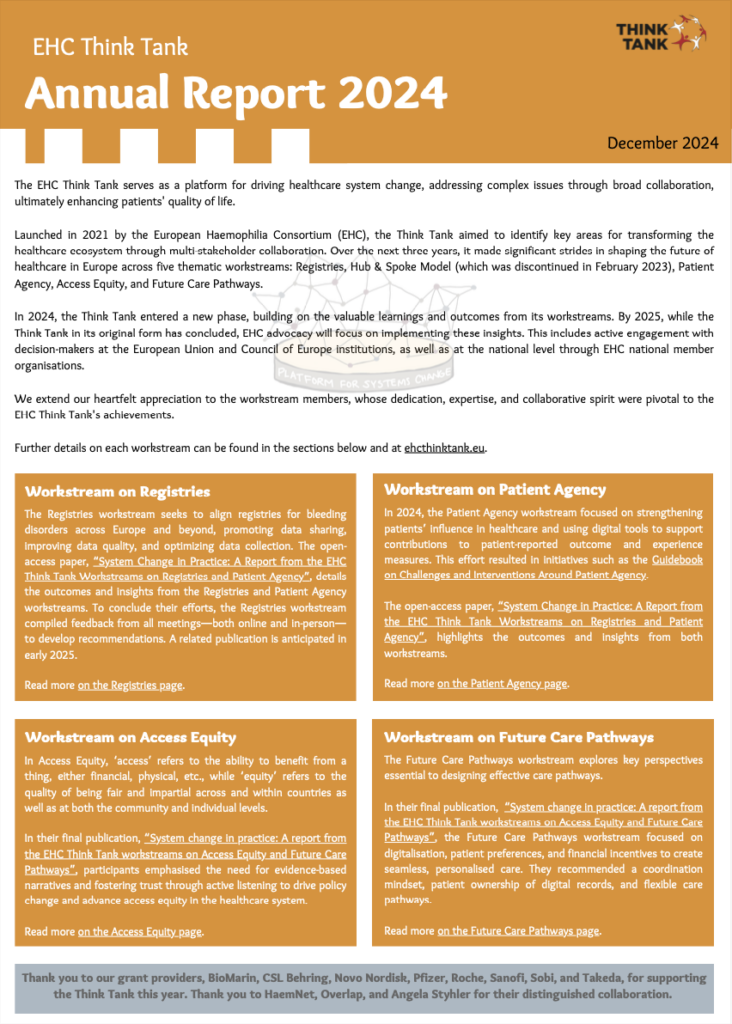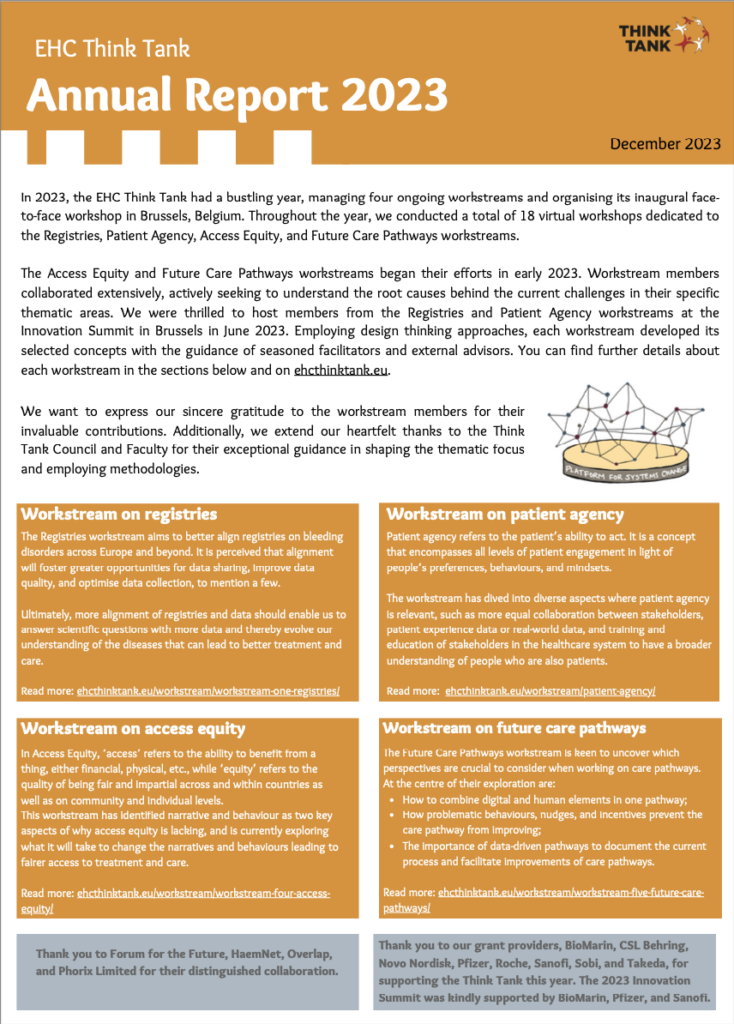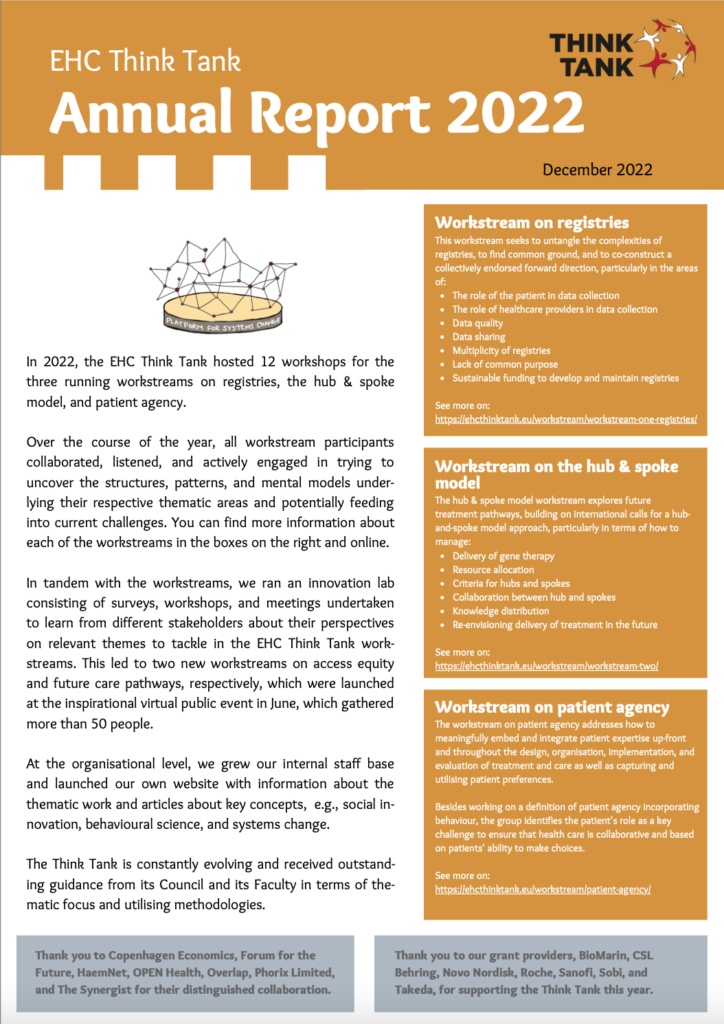The EHC Think Tank provides a platform for health systems change by engaging and working with a broad group of stakeholders in co-designing trajectories of positive future change in key thematic areas as set out in a public roadmap.
By targeting ‘systems change’, the EHC Think Tank seeks to mobilise the agency and purpose that all stakeholders in the healthcare system naturally have. Work begins in key thematic areas by starting with a mapping of the given problem landscapes as identified from all stakeholder perspectives. Work then proceeds towards co-designing potential solutions and trajectories of positive future change, in a collective multiple-stakeholder manner, that will then in turn be co-championed, co-owned and co-implemented – thereby creating an ‘inside-out’ advocacy and seeking to multiply its effect. As such, the Think Tank seeks to serve as a machine for systems change, rather than just being “a tank that thinks“.
The EHC Think Tank shall act both as an incubator of patient-led advocacy content as well as a platform for the above-outlined ‘systems change,’ and therefore, its work is divided into two parts:
Internal Think Tank work: patient-led advocacy content
Patient-led data collection and its ensuing advocacy materials form the cornerstone of the EHC’s work and continue to be driven and expanded from within the Think Tank. Additionally, the Think Tank is supporting patient-facing analytical work in key areas such as health policy and therapeutic advancements, while also supporting public-facing patient-experience testimonials and patient insights such as (but not limited to):
- Annual thematic data collection & publication,
- Annual thematic patient-cohort ‘story’ via film or other media,
- Annual series of novel therapies newsletter, and
- Quarterly series of European health policy analyses.
External Think Tank work: a platform for co-creation and systems change
Each year the Think Tank will run working ‘sessions’ – or workstreams – dedicated to a specific European priority area. In 2021-2022, these areas were identified as:



